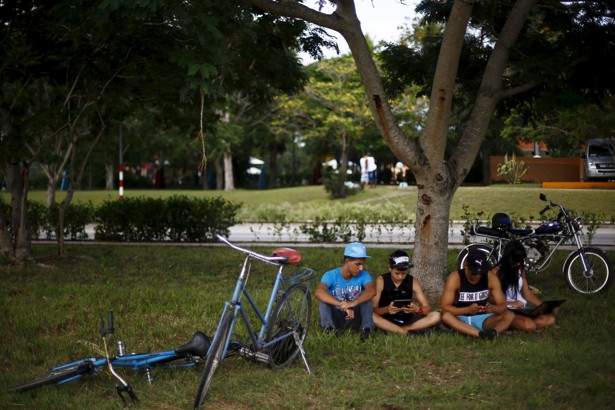
On Thursday, the Pew Research Center released a report titled “Teens, Technology, and Romantic Relationships.”
This is the trifecta of things that media articles often cast as interesting, inscrutable, and indicative of our times, so if you are picturing me slavering at the mouth to breathlessly break this down for you in a What-the-Kids-Are-Up-To-And-What-It-Means-About-the-State-of-Society sort of way, I understand. And I do think it’s interesting! But that is because I think humans and the way they relate are interesting, not because I think teens or technology operate in ways that are particularly shocking or mysterious. (Love, though, is truly a shock and a mystery, always.)
But let’s get to the stats. Fifty percent of teens have expressed interest in someone by friending them on Facebook or another social-media site, and 47 percent by commenting on or liking a post. Pew characterizes these interactions as “entry-level” digital flirting, often used by teens who have never dated before. But even for the older and more experienced, I think, they remain ways of dipping a toe in the ocean of romantic possibility while leaving yourself room to safely withdraw. The separation afforded by interacting through a screen can give people confidence to reach out to each other with their feelings. And though adolescence is not a life stage particularly known for its romantic savoir-faire, people are tentative in the early stages of romance at any age.
Percent of teens who used these flirtation strategies

One high-school girl described to Pew how the freedom afforded by digital communication makes it easier to get the romantic ball rolling:
[I can be] a little bit more bold over text, because you wouldn't say certain things in person. You would ... you just wouldn't say certain things in, like, talking face to face with them because that might be kind of awkward. But over text, it's like, OK. Cause they're not really there.
Of course there’s value to being there, really there. But there are more ways now than ever to be present in your relationship during the times when you are not, you know, physically present. And the Pew survey found that 70 percent of teens “felt closer to their significant other because of exchanges or conversations they had online or by text.” Forty-eight percent “resolved an argument with their significant other online or by texting that they were having difficulty resolving in person.” On the downside,“43 percent felt that their significant other was distracted by their cell phone when they were together” (but frankly, that’s a society-wide problem at this point).
Social media, in particular, is extra helpful for boys. While 59 percent of teens overall felt that social media helped them connect to their boyfriends and girlfriends, 65 percent of boys felt this way. This stat made me tear up a little, honestly—boys (especially teen boys!) are discouraged in so many ways from showing emotions (especially love emotions!). Facebook may be mining our personal data for profit, but it can’t all be bad if it’s helping these tender young ducklings grow into emotionally expressive swans.
It’s little wonder that they feel connected, though. They are. Regularly. “Overall, 85 percent of teens in a romantic relationship expect to hear from their partner or significant other at least once a day, if not more often,” the survey says. And it’s not asymmetrical—both parties in the relationship seem to want the same amount of contact.
And as evidenced by this chart of what teens share with their significant others online, they’re still hitting on all the important stuff, regardless of the medium:
Percent of teens who shared these topics online with a significant other

I am not being facetious; I really think this is a nearly perfect list of the things people share in a good relationship. What is a significant other but someone to share thoughts and funny stuff with? And also sometimes smooch?
Though the ease of communicating and the many platforms on which to do so can help relationships blossom, it also provides opportunities for jealousy and worry. When you can see what people are doing, and who they’re doing it with, seeds of suspicion can grow. Twenty-seven percent of teens in the survey said that “social media makes them feel jealous or unsure about their relationship.” These are the tradeoffs: What makes healthy relating easier also makes unhealthy relating easier.
On a darker note, the many means to contact people also give unfortunate latitude to abusers, who have many avenues for harassment. Unsurprisingly, girls are more likely to be subject to unwelcome flirting than boys: 35 percent compared to 16 percent. And some teens reported experiencing abusive or controlling behavior from their significant other—21 percent said a partner had read their texts without their permission, and 11 percent said a current partner or an ex had threatened them by phone or Internet.
To sum up: I don’t think this survey reveals much that is surprising. But it is affirming. Humans are social animals, and we build tools to connect with each other. It’s not all heart emojis all the time, no, but the tools that facilitate relationships facilitate all aspects of them, good and bad. Connecting with others is scary, hard, sometimes dangerous, but usually, hopefully, good. The teens get it.